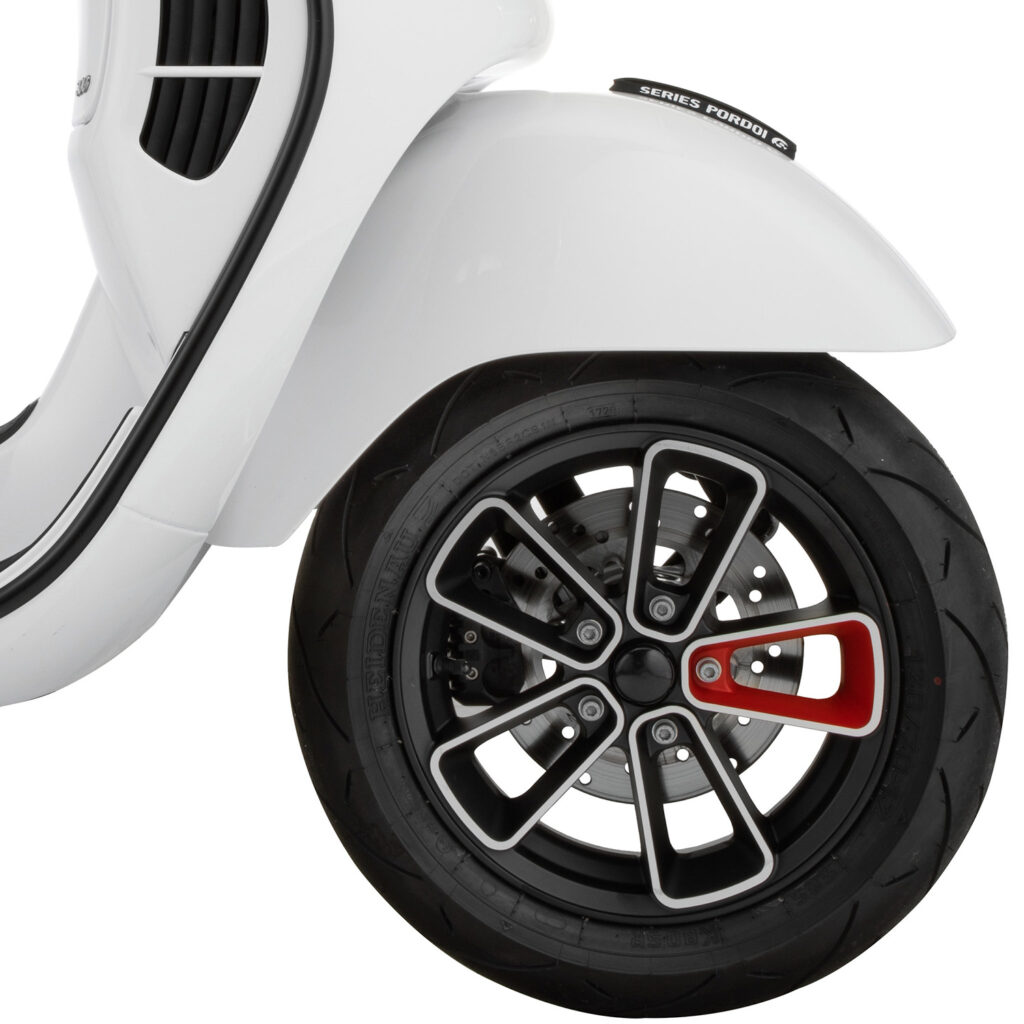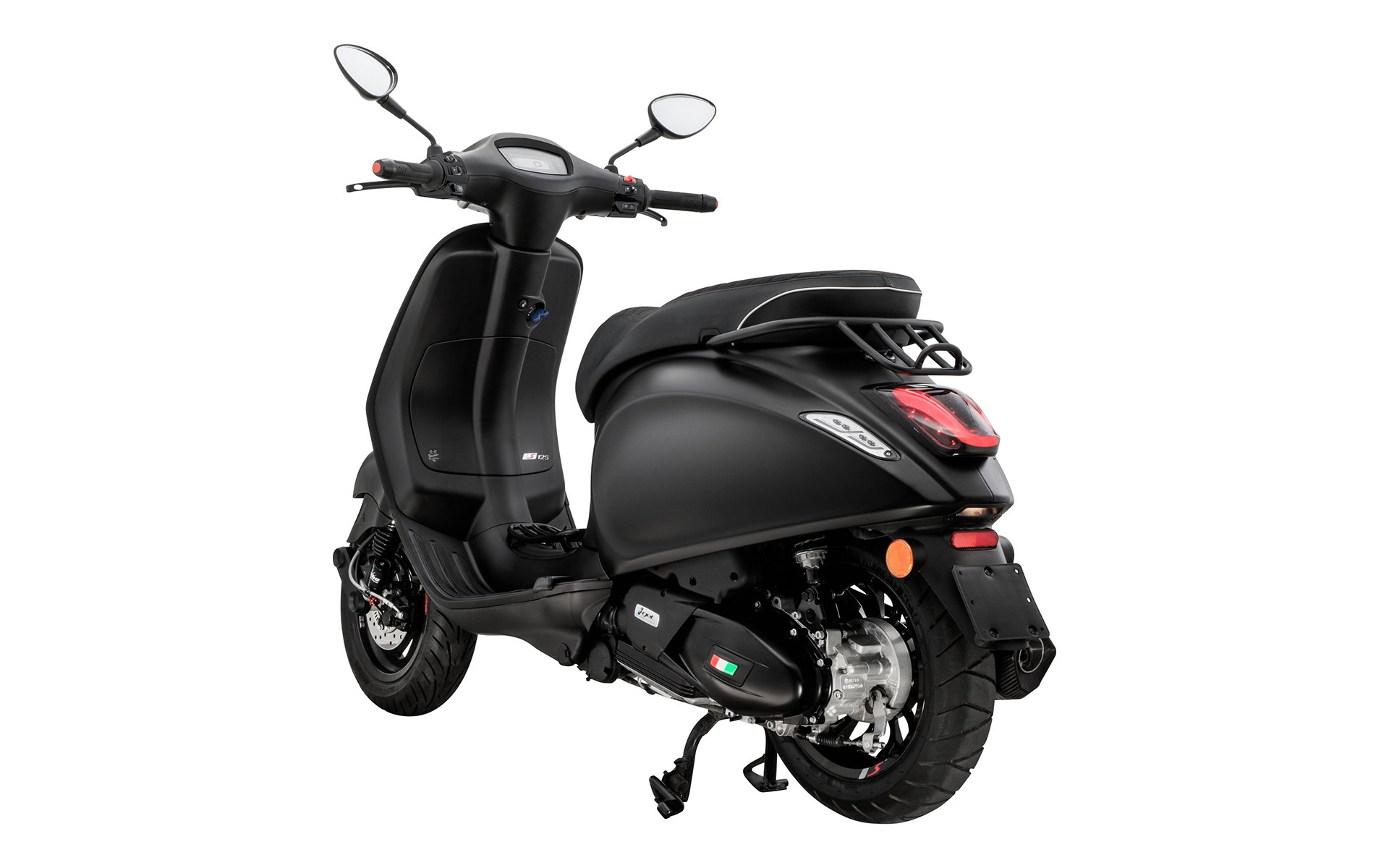The inglorious exit over the front handlebars: a scenario much feared by Vespa riders. In the event of a dangerous situation, the natural reaction is usually to brake hard first. In the case of older Vespa models, this situation poses considerable dangers depending on the speed. If the brakes are applied strongly, both wheels can quickly lock up. Since the main braking power is usually applied to the front wheel, a locked front wheel is often immediately followed by a crash.
By means of modern anti-lock braking systems (ABS) in the new Vespa models, this situation is prevented in the best possible way. As a nostalgic person, you should stop here for a moment, because this advantage is a very significant one that puts all historical models in the shade in terms of safety and hazard minimization.
Structure of the ABS
The anti-lock braking system (ABS) on Vespas works in a similar way to cars and other vehicles. The ABS is basically a safety feature designed to prevent the aforementioned locking of the wheels during braking.
It allows the driver to maintain control of the vehicle and shorten the braking distance.
The main components of ABS are the sensor, the tone wheel and an integrated speed monitoring system. This detects disproportionate deceleration of the wheel. The sensor communicates this to an electrohydraulic control unit, which activates the ABS. This prevents locking and enables effective braking – even on surfaces with low adhesion.
How the braking process works
Sensors monitor the speed of each wheel, which is transmitted by the tone wheel to the ABS control unit.
The control unit continuously analyzes the speed data of the wheels and compares them to determine whether one or both wheels are in danger of locking.
In such a case, the control unit activates built-in electromagnetic valves. These valves regulate the pressure in the brake lines of the individual wheels. When the ABS detects that a wheel is in danger of locking, it opens the corresponding valve for a short time to relieve the brake pressure. This relieves the wheel and allows it to turn again. Once the threat of locking has passed, the ABS closes the valve again to restore normal brake pressure.
This process of opening and closing the valves occurs very quickly and repeats several times per second to prevent the wheels from slipping during braking. For the driver, this can be perceived by the fact that he can maintain control of the vehicle, continue to steer and bring the vehicle to a safe stop.
If the brakes ever need a renewal, it is worth a look at the spare parts from SIP, there you will find everything about Vespas and the brakes can be operated again with more safety.

Next step: addition of ASR technology
While ABS has been fitted as standard since 2013, ASR traction control (traction slip control) was not fitted as standard across the board until 2014. ASR control is a function that improves vehicle traction and stability in slippery or slippery road conditions. The ASR function works in conjunction with the scooter’s drive system to prevent rear wheel spin and loss of grip.
ASR traction control is based on additional sensors that monitor rear wheel speed. When the system detects that the rear wheel is spinning too fast and slippage is occurring, it intervenes to restore traction. It does this by reducing engine power or by selectively braking the affected wheel.
For example, if the rear wheel spins on a slippery surface, the ASR traction control system detects the increased speed jump and sends a signal to the engine control unit to reduce power. This controls wheel spin and restores grip.
The system can also apply targeted braking to the affected wheel to improve traction.
ASR traction control on Vespa scooters is particularly useful for keeping the vehicle stable in difficult road conditions, such as wet or icy roads. It helps prevent wheel spin, which could lead to a loss of control and possibly a crash.
Ultimately, the two systems complement each other perfectly, with ABS covering speed reduction, i.e. braking, while ASR covers acceleration of the Vespa. Thus, in both directions, it is ensured that wheel locking or spinning is prevented.
Maintenance and development
As in all areas, Vespa is committed to constantly improving and developing the existing systems. For hobbyists this means at the same time that independent maintenance is only possible to a limited extent. Maintenance is hardly possible without the appropriate expertise and tools. Whereby in the case of repairs to brakes, the utmost caution is required anyway and these should always be carried out by experts in case of doubt. At this point, the nostalgics mentioned at the beginning will probably smile smugly again, since maintenance on the historical models can usually be carried out quickly and easily by the participants themselves. But here again, the common fun of the iconic Vespa applies, regardless of whether ABS is installed or not.
What to know about the ABS
Which Vespas have ABS?
Seit 2013/14 haben die neueren Vespa Modelle ein ABS/ASR mit eingebaut. Die Vespa GTS, Sprint und Primavera sind somit alle auf der sicheren Seite und bringen FahrerInnen auch sicher ans Ziel.
What are the brakes on a Vespa?
The older Vespa models have a drum brake. The brake drum is firmly connected to the wheel or rim. When the brake is applied, the brake shoes are spread out and pressed against the drum. A major problem with this now obsolete technology is that it achieves significantly lower braking performance than disc brakes.
For this reason, the newer models have switched to disc brakes without exception. The brake caliper or its piston grips the brake disc and thus reduces the speed.



